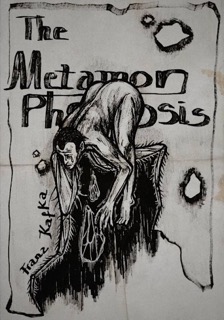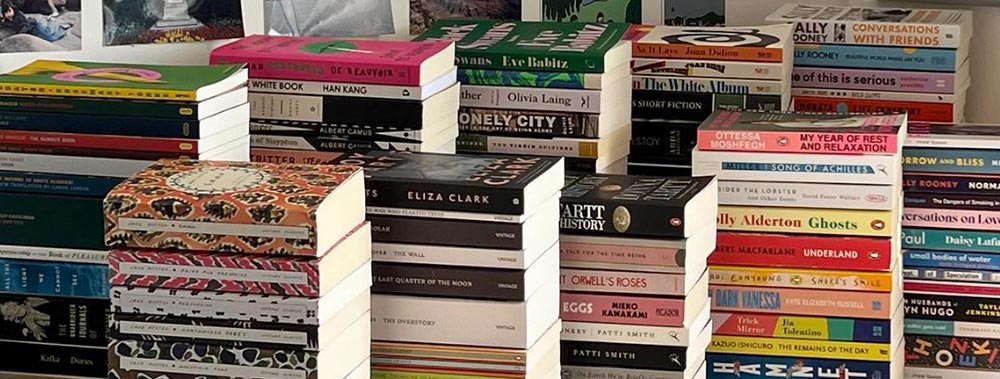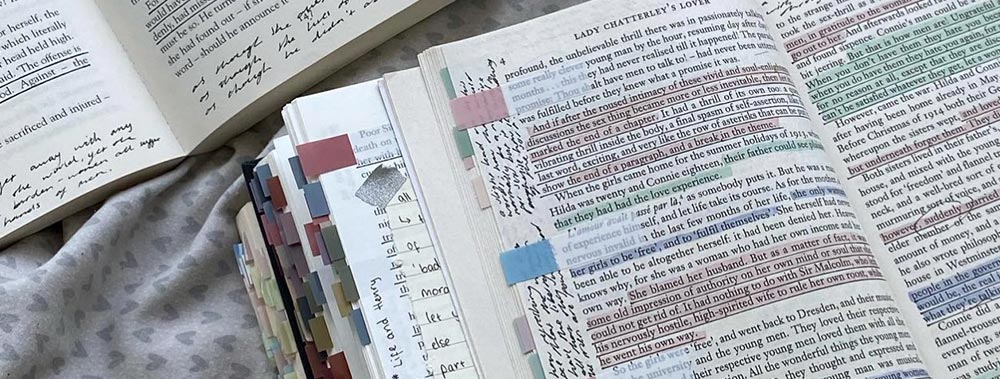The Metamorphosis: Summary, Plot, Characters, Literary Analysis & More
Published in 1915, Franz Kafka’s “The Metamorphosis” is a masterful short story that delves into the bizarre and profound. This novella follows the bewildering journey of Gregor Samsa, a traveling salesman who wakes up one morning transformed into a giant insect.
As Gregor attempts to navigate his newfound reality, he grapples with his family’s reactions, including his father’s anger and his sister Grete’s growing distance.
The narrative revolves around Gregor’s struggle to communicate, his family’s attempts to adjust, and the verminous isolation that engulfs him.
Kafka’s exploration of human relationships, societal expectations, and the boundary between humans and insects is a haunting and thought-provoking meditation on existentialism and identity.
The Metamorphosis Summary
Gregor Samsa wakes to a shocking transformation into an insect. His father, mother, and sister Grete grapple with the grotesque change, revealing strained family dynamics. Gregor’s isolation in his room intensifies as he overhears their conversations.
Despite his insect form, he tries to connect with them. Grete becomes his caretaker, but the family’s compassion wanes. Gregor’s father’s aggression deepens, and his mother’s fainting shows their struggles.
As Gregor’s health deteriorates, the family becomes more resentful. His eventual death marks both an end to his suffering and the dissolution of family ties. Kafka’s exploration unveils the fragility of familial bonds amid astonishing metamorphosis.

The Metamorphosis" is a masterful short story that delves into the bizarre and profound.
Table of Contents
Summary The Plot Characters Key Themes Genres Language used Literary devices Summing upThe Plot
Read on for “The Metamorphosis” summary.
In “The Metamorphosis” by Franz Kafka, Gregor Samsa wakes one day to a bizarre transformation into an insect. His father’s anger and mother’s distress contrast with Grete’s initial empathy. Confined to his room, Gregor overhears family conversations, highlighting their evolving attitudes.
As he discovers his new abilities and limitations, his isolation deepens. Gregor’s family struggles with his changed identity, leading to financial hardships and emotional strain.
Trapped in his insect form, Gregor’s isolation intensifies until his eventual death, underscoring the poignant themes of identity, alienation, and the fragility of familial bonds.
Characters
The key protagonists and important characters in the book are as follows.
Gregor Samsa
The central character, Gregor wakes to find himself transformed into an insect. His struggle to communicate and adapt to his new form highlights themes of isolation and identity.
Gregor’s Father
Gregor’s father reacts with anger and frustration to his transformation. His strained relationship with Gregor underscores generational conflicts and societal pressures.
Gregor’s Mother
Gregor’s mother initially shows distress and concern for him. However, she later faints at the sight of him, reflecting the family’s gradual distancing from him.
Grete
Gregor’s sister, Grete, initially takes care of him and shows empathy. However, her empathy wanes as she becomes more distant, showcasing the impact of Gregor’s transformation on familial relationships.
Family Members
The collective response of Gregor’s family reflects the struggles and tensions arising from his transformation. Their interactions and reactions illustrate the complexities of human behavior and relationships.
Chief Clerk
Representing external authority, the chief clerk’s visit to the Samsa household highlights societal expectations and pressures.
Three Boarders
These characters exemplify the family’s financial struggles, serving as a contrast to Gregor’s situation and shedding light on the family’s changing dynamics.
Office Manager
His role in Gregor’s workplace adds to the story’s exploration of societal norms and expectations, emphasizing the conflict between personal identity and professional obligations
Key Themes
One prominent theme in Franz Kafka’s “The Metamorphosis” is the confinement of identity. Gregor’s room symbolizes his isolation and alienation as he discovers his insect form. His family’s refusal to open the door to his room reflects their inability to confront his transformation.
Gregor hides from their rejection, but ultimately, Gregor discovers that his death underscores the tragic consequences of societal indifference to individual identity, illustrating the theme of dehumanization and existential isolation. Yes, spoiler alert, Gregor dies.
Genres in The Metamorphosis
Franz Kafka’s “The Metamorphosis” seamlessly blends elements of surrealism, allegory, and psychological fiction. As Gregor realizes his insect transformation, surrealism magnifies the uncanny. The allegorical undertones portray societal pressures, highlighted when Gregor spends his energy toiling for his family.
Gregor decides and protests showcase psychological turmoil. This fusion of genres enhances the portrayal of Gregor’s internal and external struggles, enriching the exploration of identity, alienation, and the human psyche.
Language used in The Metamorphosis
In “The Metamorphosis,” Franz Kafka employs a unique and introspective writing style that conveys the story’s unsettling atmosphere and complex emotions. The language portrays Gregor’s internal turmoil as he notices his transformation and protests against his family’s treatment.
Family dynamics are skillfully depicted through dialogue and interactions among members. Kafka uses vivid imagery to convey Gregor’s experience as a giant insect, emphasizing his isolation and the repulsion he invokes. This blend of narrative techniques contributes to the story’s haunting and thought-provoking nature.
Literary devices in The Metamorphosis
Kafka incorporates various literary devices throughout the novella to enhance its themes and messages. These devices include symbolism, allegory, and metaphor, seen in Gregor’s transformation as a representation of societal dehumanization.
The motif of the giant insect underscores the absurdity of existence. The family’s decisions and actions reflect the broader human condition. Kafka’s use of first-person narrative through Gregor’s voice lends a unique perspective on his internal struggles.
The presence of the chief clerk and family discussions amplifies the story’s social commentary. Overall, these devices deepen the story’s impact and highlight Kafka’s masterful storytelling.
Similes
In “The Metamorphosis,” Franz Kafka employs vivid similes to evoke a sense of the surreal and highlight Gregor’s transformed state. For instance, when Gregor notices his insectoid body, he likens his numerous legs to “little legs” like those of a “nourishing delicacy.”
These similes enhance the reader’s engagement by comparing the unfamiliar to the familiar, bridging the gap between the human and insect worlds and accentuating Gregor’s sense of alienation and unease.
Metaphors
Kafka’s use of metaphors in “The Metamorphosis” enriches the narrative’s symbolic depth. Gregor’s transformation serves as a metaphor for societal alienation, emphasizing the human struggle for identity within a conformist society.
As Gregor’s family members decide his fate, they metaphorically represent wider themes of dehumanization and familial disconnect. The metaphors create layers of meaning, inviting readers to contemplate the intricacies of human existence, societal pressures, and the fragility of relationships.
Analogies
While the provided keywords don’t explicitly mention analogies, “The Metamorphosis” could potentially include them to illustrate complex ideas. For instance, when Gregor protests against his isolation might be analogized to a caged bird’s cries, underscoring his longing for freedom and his entrapment within societal expectations.
Analogies offer readers relatable parallels, allowing them to grasp the intricacies of Gregor’s plight and the broader themes of confinement and personal agency.
Imagery
Kafka’s use of vivid imagery in “The Metamorphosis” engages readers’ senses, enhancing the narrative’s impact. When the Samsa family reacts, detailed descriptions could highlight their facial expressions and body language, conveying their evolving emotions toward him.
As Gregor climbs, Kafka’s imagery might evoke the physical effort and emotional struggle he endures. Through rich visual and sensory descriptions, readers are transported into the characters’ experiences, deepening their connection to the story’s emotional nuances. You are about to see everything Gregor manages to do.
Symbolism
Throughout “The Metamorphosis,” Kafka employs powerful symbols. Gregor finds that his retreat back into his room is emblematic of his growing alienation. His mother’s fainting illustrates her inability to cope. Kafka’s ordered structure mirrors the rigid, societal expectations.
The father’s arrival embodies reestablished authority. These symbols intersect with the themes of isolation, family dynamics, and societal pressures, crafting a layered narrative that explores human vulnerability and the constraints of identity.
Personification
The novella subtly personifies elements, enhancing characterization. The “rotten food” reflects the decaying family relationships. Grete’s decisions mirror her emotional turmoil. These personifications imbue inanimate objects with human attributes, deepening the emotional resonance of the narrative.
By investing elements with human-like qualities, Kafka provides readers with a visceral understanding of the characters’ experiences and struggles.
Hyperbole
Hyperbolic elements in “The Metamorphosis” amplify the narrative’s emotional weight. Gregor’s transformation into “monstrous vermin” highlights his profound dehumanization. Describing Grete’s actions as “running” and labeling things as “horrible vermin” enhances the story’s intensity.
Hyperbole magnifies emotions and situations, intensifying reader engagement and underscoring the characters’ internal battles and external challenges.
Irony
Mr. Samsa goes to visit Gregor and that embodies situational irony, as their roles reverse due to Gregor’s transformation. The family’s initial care and later neglect exhibit dramatic irony, underscoring the gap between their actions and Gregor’s plight.
The verbal irony arises as Mr. Samsa’s invalid state contrasts with his resumption of employment. These ironies create tensions, highlighting the absurdity of life’s twists and the disconnection between appearances and realities, amplifying the novella’s exploration of human complexities.
Juxtaposition
Juxtaposition in “The Metamorphosis” is evident when Mr. Samsa’s visit contrasts with their reversed roles. The moment Gregor’s mother sees him transformed accentuates the divide between perception and reality.
We can see what the family decides and their reactions after discovering Gregor’s condition underscore evolving attitudes. These contrasts prompt readers to reflect on identity shifts, societal expectations, and human empathy, engendering thought-provoking scenarios that deepen the novella’s thematic resonance.
Paradox
In “The Metamorphosis,” a paradox arises as the mother sees Gregor in his insect form, yet still yearns to nurture him. This paradox mirrors the conflict between appearance and essence, suggesting that the transformation hasn’t severed their emotional bond.
Additionally, Gregor learns about his newfound abilities as an insect, which paradoxically liberates him within the confines of his physical form, adding depth to his journey of self-discovery.
Allusion
The scene where Gregor’s father throws apples at him subtly alludes to the biblical story of Adam and Eve. These apples symbolize the expulsion from an ideal state, echoing themes of innocence lost and the consequences of forbidden knowledge.
Kafka creates a nuanced layer of meaning, enriching the narrative through this allusion, and inviting readers to reflect on the implications of choice, transformation, and the human condition.
Allegory
“The Metamorphosis” by Franz Kafka employs allegory to explore profound themes. Gregor’s transformation allegorically symbolizes the alienation experienced by individuals in a conformist society.
The family members’ responses represent society’s tendency to ostracize those who deviate from norms. Kafka’s ordered narrative mirrors the structured expectations that stifle individuality.
We can see how the father arrives and how the father returns, along with the family’s feelings, allegorically depict the power dynamics within families, reflecting broader human relationships and societal constraints.
Ekphrasis
Within “The Metamorphosis” by Franz Kafka, explicit instances of ekphrasis aren’t evident. However, Kafka’s descriptive language vividly portrays Gregor’s transformation into an insect, forming a mental canvas where readers can envision the physical and emotional changes.
While not a direct description of visual art, Kafka’s evocative language constructs mental imagery that engages readers’ interpretive faculties, enhancing their immersion into the story’s themes of identity, isolation, and societal expectations.
Onomatopoeia
Kafka strategically employs onomatopoeic words to augment the auditory dimensions of “The Metamorphosis”. When Gregor’s mother faints, the onomatopoeic description evokes the dramatic impact of the event.
Describing family members (and how the family feels) talking adds an auditory layer to their interactions. This use of onomatopoeia enriches the narrative’s sensory texture, allowing readers to immerse themselves in the characters’ experiences, amplifying their emotional resonance, and forging a deeper connection to the story’s unfolding drama.
Puns
Kafka’s use of language is laden with metaphorical meanings, possibly hinting at potential puns or double entendres that contribute to the novella’s layered themes and emotional depth.
His use of symbolic language involving Gregor’s experiences may harbor hidden meanings, allowing readers to engage with the narrative on multiple levels, invoking both thought and emotion.
Repetition
Kafka’s repetition in “The Metamorphosis” emphasizes key thematic elements. Family members talking repetitively highlights the growing divide between Gregor and his family.
Kafka ordered recurs to underline the structured and oppressive nature of Gregor’s society. Drive Gregor underscores the relentless pressures on him.
This repetition serves to magnify the thematic explorations, intensifying the reader’s understanding of the alienation, societal expectations, and psychological turmoil faced by the characters.
The Use of Dialogue
In “The Metamorphosis” by Franz Kafka, dialogue plays a pivotal role in characterizing, thematic exploration, and tension building. As Gregor falls asleep, his family’s discussion about rotting food scraps highlights their evolving attitudes toward him.
Conversations reveal their family decisions, such as when Grete runs, reflecting changing dynamics. The dialogue from the mother captures her emotional struggle, adding depth to her character.
Additionally, the dialogue when Gregor is ushered back into the bedroom reveals the family’s mix of concern, repulsion, and sympathy. Dialogue serves as a window into character traits, thematic layers, and narrative tension, enriching the novella’s impact. We can also see how Gregor feels.
Word Play
The book subtly employs wordplay techniques to deepen its narrative layers. As Grete decides to remove Gregor’s furniture, her decision resonates beyond the physical act, reflecting the family’s changing decisions.
The phrase “family decide” encompasses both the family’s collective choices and the idea of their decisions defining Gregor’s fate. When Grete steps towards Gregor, it suggests both her physical movement and her growing responsibility.
These instances of wordplay enrich the novella, infusing ordinary language with complex meanings, and inviting readers to delve into the intricacies of human relationships, transformation, and societal pressures.
Parallelism
“The Metamorphosis” by Franz Kafka employs parallelism to underscore thematic elements. Instances, where the father tells Gregor to open the door, create a recurring pattern, illustrating the father’s authoritarian attitude and Gregor’s dwindling agency.
Gregor’s new perspective as an insect parallelly mirrors his family’s new perceptions, highlighting the transformative nature of his condition. This parallelism structures the narrative, accentuating the power dynamics and the disconnect between Gregor and his family.
By repeating certain phrases, Kafka reinforces the novella’s exploration of identity, family dynamics, and the dissonance between internal and external realities.
Rhetorical Devices
“The Metamorphosis” by Franz Kafka employs rhetorical devices to enhance its persuasive impact. The recurring phrase “Gregor wakes up one morning” employs parallelism, evoking a sense of routine that contrasts with the abrupt transformation he undergoes.
Rhetorical questions, such as pondering “Gregor Samsa, what’s happened to you?”, provoke introspection about his state. The descriptions of Gregor’s room and the events surrounding his transformation use vivid details that foster a persuasive immersive experience.
By employing these devices, Kafka effectively engages readers, fostering emotional and intellectual connections with the narrative’s themes of identity, alienation, and transformation.
The Metamorphosis: FAQs
Now, let’s see some commonly asked questions about the book as we delve deeper into this “The Metamorphosis” summary.
How old is Gregor’s father and how old is Gregor Samsa in the book?
Gregor’s father’s age isn’t explicitly stated, but he is portrayed as older, implying middle-aged or older. Gregor Samsa’s exact age isn’t mentioned either, but he is depicted as a young adult, probably in his early 20s.
How is the room described on that day when Gregor wakes as an insect?
On the day Gregor wakes as an insect, his room is described as oppressive, cluttered, and suffocating. The light filters in dimly, casting long shadows, while mundane details like the furniture and the picture on the wall create an eerie atmosphere.
Who is the target audience of this book?
“The Metamorphosis” appeals to a diverse audience. It’s often appreciated by readers interested in existential themes, psychological exploration, and literary symbolism. Its universal themes of isolation, family dynamics, and identity resonate with people of various backgrounds.
Is this book used in schools?
Yes, “The Metamorphosis” is frequently used in schools as part of literature curricula. Its complex themes, symbolism, and thought-provoking narrative offer ample material for discussion and analysis, making it a valuable teaching tool for exploring literature, psychology, and philosophy.
Is there an audiobook and where can I find it?
Yes, “The Metamorphosis” has audiobook versions available. You can find them on popular platforms like Audible, Amazon, iTunes, and other audiobook retailers. These versions allow you to experience Franz Kafka’s iconic work in an auditory format, enhancing your engagement with the narrative and seeing if this is the voice you imagined for Gregor Samsa.
Other Notable Works by Franz Kafka
You may be interested in other works by Franz Kafka including:
- “The Trial” – A man’s inexplicable arrest exposes the absurdity of the legal system and his futile search for meaning.
- “The Castle” – K.’s struggle to gain access to a mysterious castle reflects the futility of bureaucratic systems.
- “A Hunger Artist” – A performer’s fasting artistry becomes a metaphor for isolation and the unappreciated pursuit of passion.
- “In the Penal Colony” – A disturbing execution device unveils the dark corners of justice and human nature.
- “The Verdict” – A young man’s strained relationship with his father results in a life-altering verdict.
- “The Stoker” – A ship’s stoker finds himself at odds with the crew and society, reflecting themes of displacement.
- “A Country Doctor” – A rural doctor’s bizarre night journey reveals existential struggles in a surreal setting.
- “Letter to His Father” – A poignant letter delves into Kafka’s strained relationship with his father.
- “The Judgment” – A son’s engagement precipitates a shocking act, exploring complex familial dynamics.
These works explore similar themes of alienation, identity, and the complexities of human existence, offering readers a broader perspective on Kafka’s unique literary vision.
Summing up: The Metamorphosis: Summary, Plot & More
That’s the end of “The Metamorphosis” summary. As you now know, “The Metamorphosis” by Franz Kafka is a transformative novella that delves into themes of identity, family dynamics, and societal pressures.
Gregor Samsa’s abrupt transformation into an insect and his family’s reactions underscores the dissonance between appearance and essence.
Symbolism, irony, and allegory are skillfully used to reflect on human vulnerability and the absurdity of existence. Kafka’s evocative descriptions create an immersive experience, and his use of onomatopoeia and wordplay enhances emotional resonance.
Parallelism and rhetorical devices strengthen themes of alienation and power dynamics. The novella’s use in schools reflects its deep exploration of existential ideas.
Overall, “The Metamorphosis” captivates diverse readers with its profound insights into the human condition, serving as a timeless exploration of societal norms, human worth, and the struggle for authenticity







